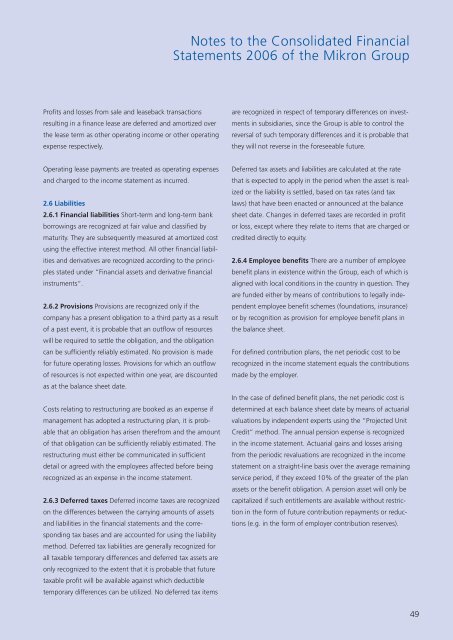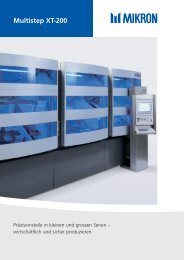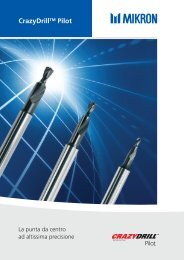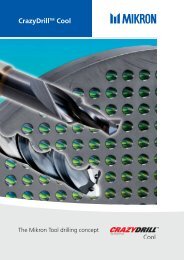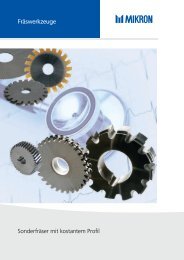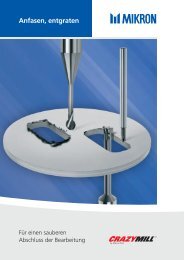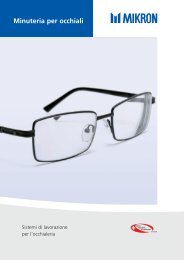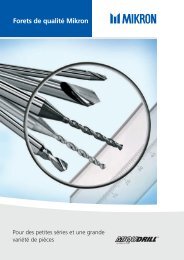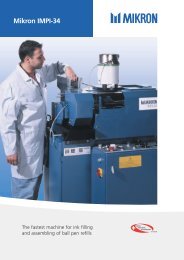Annual Report 2006
Annual Report 2006
Annual Report 2006
You also want an ePaper? Increase the reach of your titles
YUMPU automatically turns print PDFs into web optimized ePapers that Google loves.
Profits and losses from sale and leaseback transactions<br />
resulting in a finance lease are deferred and amortized over<br />
the lease term as other operating income or other operating<br />
expense respectively.<br />
Operating lease payments are treated as operating expenses<br />
and charged to the income statement as incurred.<br />
2.6 Liabilities<br />
2.6.1 Financial liabilities Short-term and long-term bank<br />
borrowings are recognized at fair value and classified by<br />
maturity. They are subsequently measured at amortized cost<br />
using the effective interest method. All other financial liabilities<br />
and derivatives are recognized according to the principles<br />
stated under “Financial assets and derivative financial<br />
instruments“.<br />
2.6.2 Provisions Provisions are recognized only if the<br />
company has a present obligation to a third party as a result<br />
of a past event, it is probable that an outflow of resources<br />
will be required to settle the obligation, and the obligation<br />
can be sufficiently reliably estimated. No provision is made<br />
for future operating losses. Provisions for which an outflow<br />
of resources is not expected within one year, are discounted<br />
as at the balance sheet date.<br />
Costs relating to restructuring are booked as an expense if<br />
management has adopted a restructuring plan, it is probable<br />
that an obligation has arisen therefrom and the amount<br />
of that obligation can be sufficiently reliably estimated. The<br />
restructuring must either be communicated in sufficient<br />
detail or agreed with the employees affected before being<br />
recognized as an expense in the income statement.<br />
2.6.3 Deferred taxes Deferred income taxes are recognized<br />
on the differences between the carrying amounts of assets<br />
and liabilities in the financial statements and the corresponding<br />
tax bases and are accounted for using the liability<br />
method. Deferred tax liabilities are generally recognized for<br />
all taxable temporary differences and deferred tax assets are<br />
only recognized to the extent that it is probable that future<br />
taxable profit will be available against which deductible<br />
temporary differences can be utilized. No deferred tax items<br />
Notes to the Consolidated Financial<br />
Statements <strong>2006</strong> of the Mikron Group<br />
are recognized in respect of temporary differences on investments<br />
in subsidiaries, since the Group is able to control the<br />
reversal of such temporary differences and it is probable that<br />
they will not reverse in the foreseeable future.<br />
Deferred tax assets and liabilities are calculated at the rate<br />
that is expected to apply in the period when the asset is realized<br />
or the liability is settled, based on tax rates (and tax<br />
laws) that have been enacted or announced at the balance<br />
sheet date. Changes in deferred taxes are recorded in profit<br />
or loss, except where they relate to items that are charged or<br />
credited directly to equity.<br />
2.6.4 Employee benefits There are a number of employee<br />
benefit plans in existence within the Group, each of which is<br />
aligned with local conditions in the country in question. They<br />
are funded either by means of contributions to legally independent<br />
employee benefit schemes (foundations, insurance)<br />
or by recognition as provision for employee benefit plans in<br />
the balance sheet.<br />
For defined contribution plans, the net periodic cost to be<br />
recognized in the income statement equals the contributions<br />
made by the employer.<br />
In the case of defined benefit plans, the net periodic cost is<br />
determined at each balance sheet date by means of actuarial<br />
valuations by independent experts using the “Projected Unit<br />
Credit“ method. The annual pension expense is recognized<br />
in the income statement. Actuarial gains and losses arising<br />
from the periodic revaluations are recognized in the income<br />
statement on a straight-line basis over the average remaining<br />
service period, if they exceed 10% of the greater of the plan<br />
assets or the benefit obligation. A pension asset will only be<br />
capitalized if such entitlements are available without restriction<br />
in the form of future contribution repayments or reductions<br />
(e.g. in the form of employer contribution reserves).<br />
49 49


